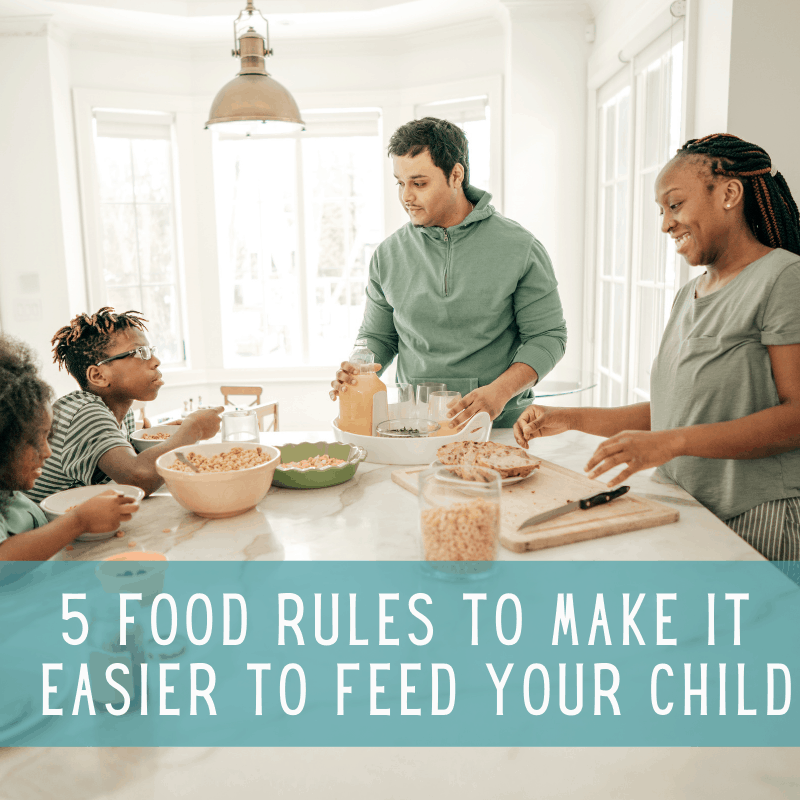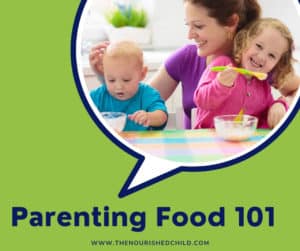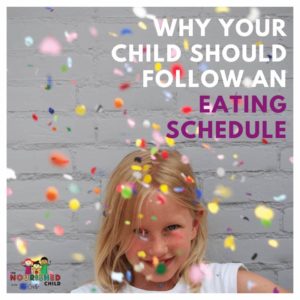Feeding the Child with Love & Limits
February 16, 2021
You probably already know that feeding the child is a big part of whether or not a child will grow up to enjoy eating and eat well. Learn how to use diplomatic feeding and feed your child with love and limits.
Your feeding style has a powerful influence over how well your child eats.
Research tells us that a diplomatic feeding style (formerly known as an authoritative style of feeding) is most effective at promoting a child’s self-regulated eating and positive relationship with food.
So, how can you become more diplomatic with feeding kids?
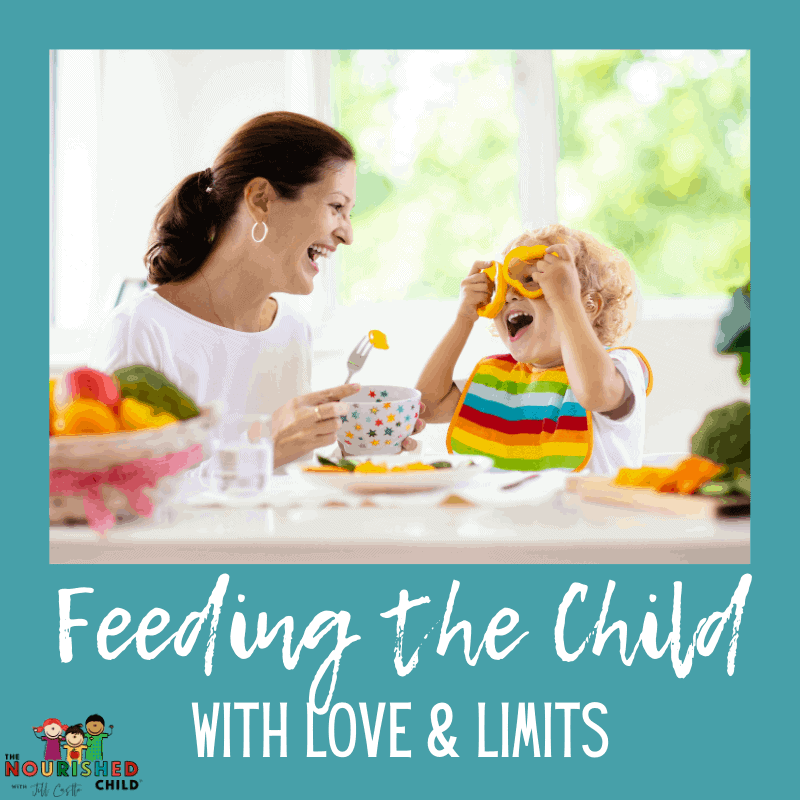
Your Feeding Style: For Better or Worse
All parents have a feeding style. You either inherit it from your own upbringing (Mom and Dad fed you like this so you feed your kids the same way) or you choose a different path for feeding your kids.
Regardless, you have a style and attitude when it comes to feeding your child.
The diplomatic feeding style incorporates regular times for meals and snacks, and sets limits on food and eating. It’s regarded as the most positive and effective way to feed children.
A diplomatic feeding style is tied to better self-regulation with eating. This means kids are good at starting and stopping eating depending on what their appetite signals tell them.
Some feeding styles, however, are less desirable. I cover this in my article, What’s Your Feeding Style?
In a nutshell, you can be controlling, indulgent or neglectful.
You can imagine these styles have poor outcomes. (Read the article to see what can happen…)
You may wonder, “Can I even change my feeding style?”
Of course! This is an area of nutrition I include in all my trainings and books.
You can always teach an old dog new tricks…that’s the beauty of evolution.
And we, as parents, are all a masterpiece in the making…right?!

8 Ways to Feeding with Love and Limits
There are several ways to better parenting and feeding with love and limits. You can become more diplomatic in your feeding style. Use the following tips to get started.
1. Use Ellyn Satter’s Division of Responsibility (DOR) in Feeding
Take on the job of deciding what foods you will serve (hopefully a nice balance of wholesome, healthy options!), where you will serve them (kitchen table, preferably), and when you will serve them.
Let your child decide whether he will eat what you’ve provided, and how much he will eat.
This is the crux of Ellyn Satter’s Division of Responsibility in Feeding and a key component to successfully feeding children.
2. Trust Your Child
Ultimately, you want your child to self-regulate their eating. In other words, to figure out when they are hungry and when they are full.
The amounts of food they eat should reflect their appetite. Trust is reciprocal; you want your child to trust food, and you, and therefore you must reciprocate that trust.
It’s natural for children to miss the mark on eating: overeating and under-eating is part of figuring out what works for your body.
Help your child figure out what works for him in a trusting environment.
3. Ditch the Plate Method
Instead of pre-plating your child’s food, opt for family-style meals. Serving meals family-style simply means placing food items on platters or in bowls.
Passing food around the table, aka “Walton-style” allows your child to refuse food or take an amount that is right for him.
Plating foods for your child takes control away from him, however, and makes you the regulator of what and how much is eaten.
This may sabotage your child’s ability to learn self-regulation, a necessary tool for achieving and maintaining a healthy weight.
4. Provide Eating Opportunities & Don’t Use Food Restriction
Parents who take on a provider mentality take the job of feeding seriously. Just like the bread winner, the parent feeder is the bread “giver.”
A serious provider will have well-planned meals, a kitchen that is adequately stocked with “growing foods” (foods that support healthy growth in your child), and will prioritize family mealtime.
When you are timely with meals and snacks, your child will likely have a predictable hunger pattern. When you stock the kitchen with foods that contribute nutrition to your child’s diet, it’s easy to say “yes” when he is hungry and asks for food.
Don’t make the mistake of restricting food. Research shows that restricting or controlling food intake is associated with overeating and weight gain in children.
Confusing? Remember the adage, “you want what you cannot have.” The same holds true with children and food.

5. Preparation x 3
The key to success is preparation, preparation, preparation. Plan the menu, gather the food, and make it!
But, don’t fall prey to being a short-order cook. Set the menu and stick to it.
6. Don’t Comment about Eating
Children don’t need to be pressured about eating or not eating. The more you lay it on, the more self-conscious and bad your child feels, which may trigger overeating or not eating at all.
7. Give a Choice, Not an Ultimatum
Remember the guideline for toddlers? Give 2 choices. Older kids, three or maybe four options.
Would you like an apple with peanut butter, or crackers with peanut butter for your after-school snack?
Giving choices, but not too many, allows your child to make good decisions about food, while feeling in control of their body and their eating.
8. Keep a Pleasant Eating Environment
What are meal times like in your home? Do your children argue, insult and put one another down, or throw temper tantrums at the meal table?
Do you get frustrated, shout, punish, or give the silent treatment? Meal times should be pleasant, supportive, and engaging.
Manners should be taught and used.
Keeping a positive attitude and reasonable expectations around mealtime manners, conversation, and interactions among family members will go a long way toward creating a mealtime environment in which your child wants to be a part.
Just a little movement toward feeding the child with a diplomatic approach can make a big difference in your child’s attitudes and actions about food and eating.
Try one “tip” and let me know how it goes!
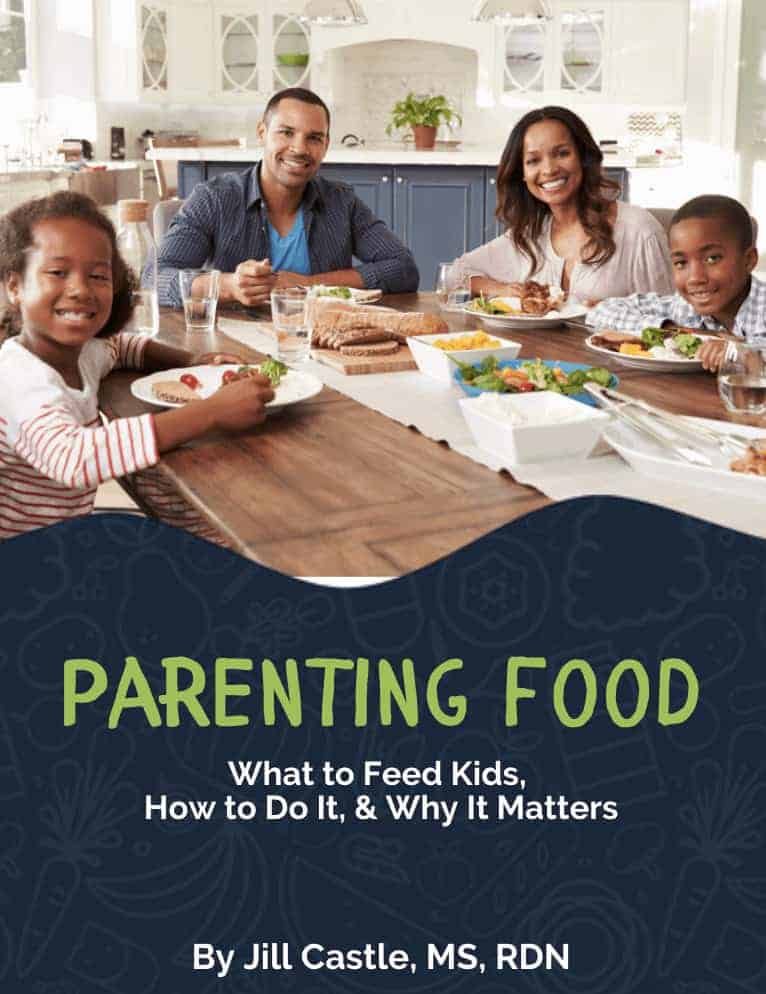
Need More Help with Feeding Kids?
Check out my on demand library of videos and my nutrition books! For videos, head to my YouTube channel!
This article was updated in February 2021.

